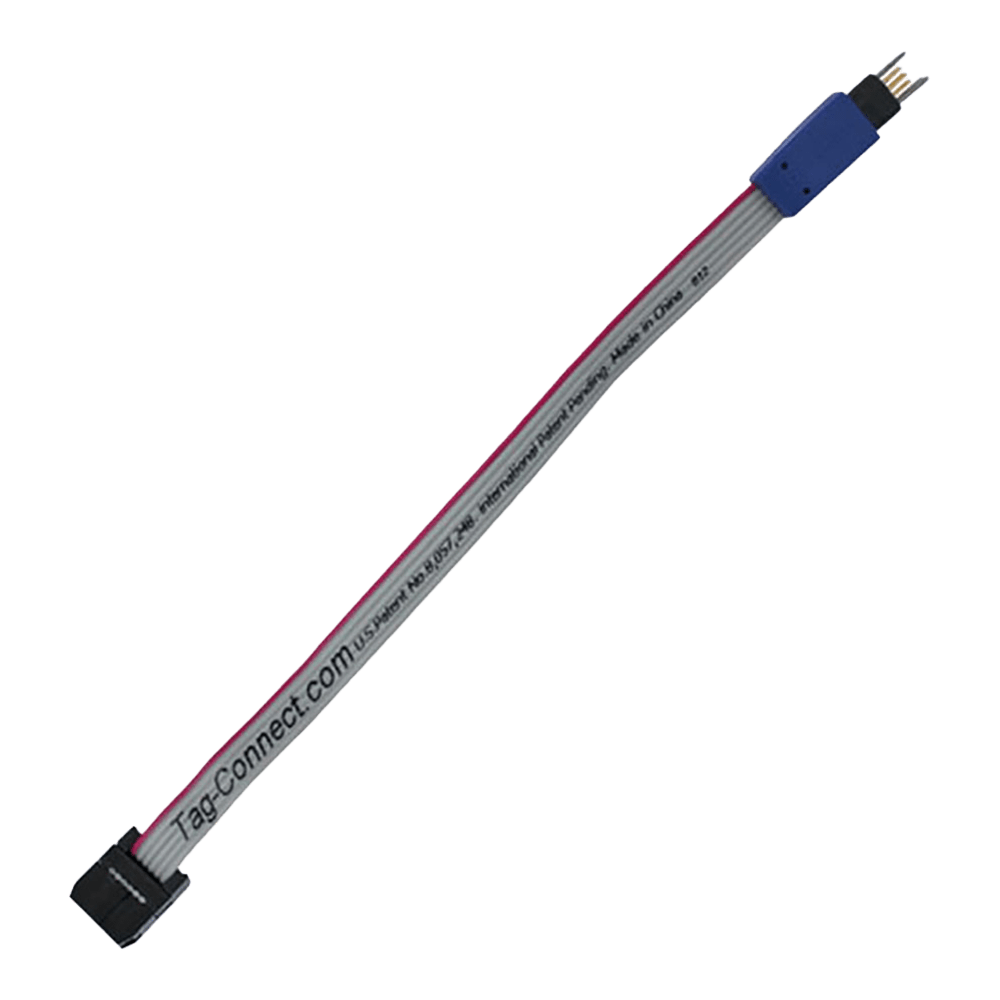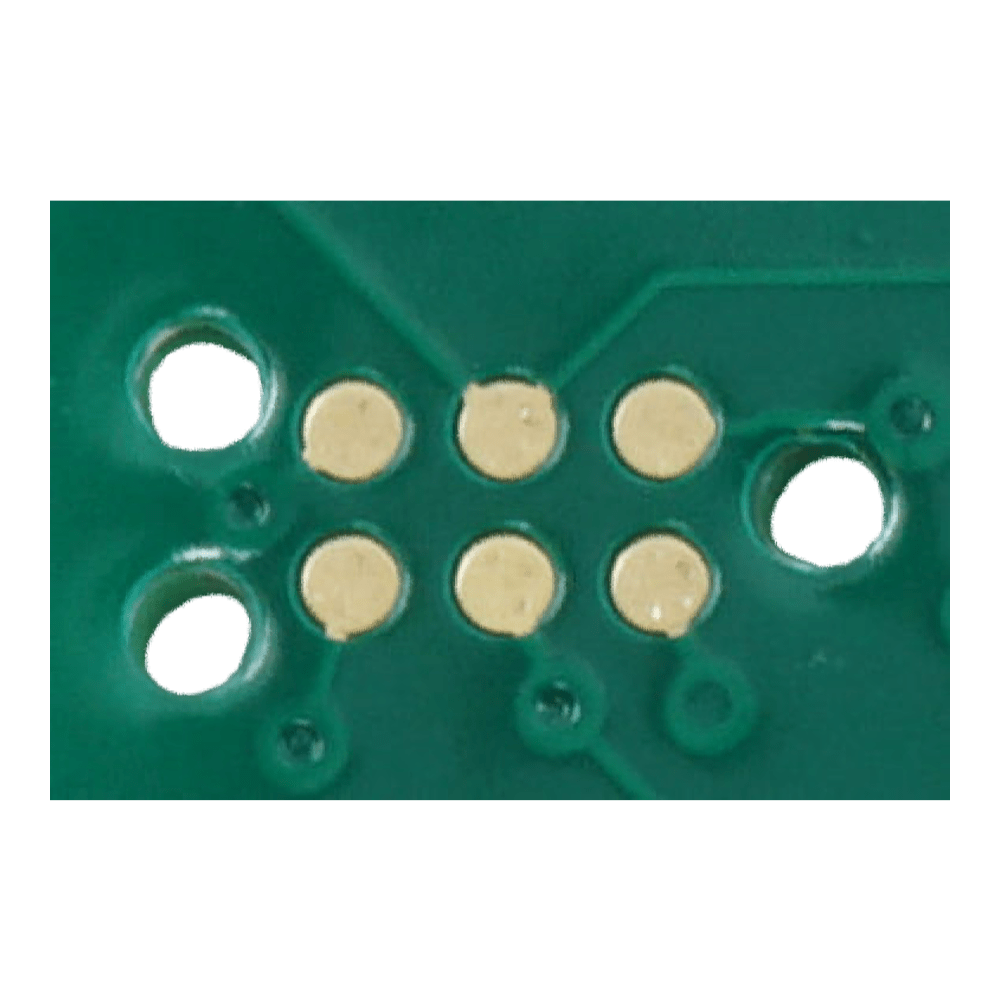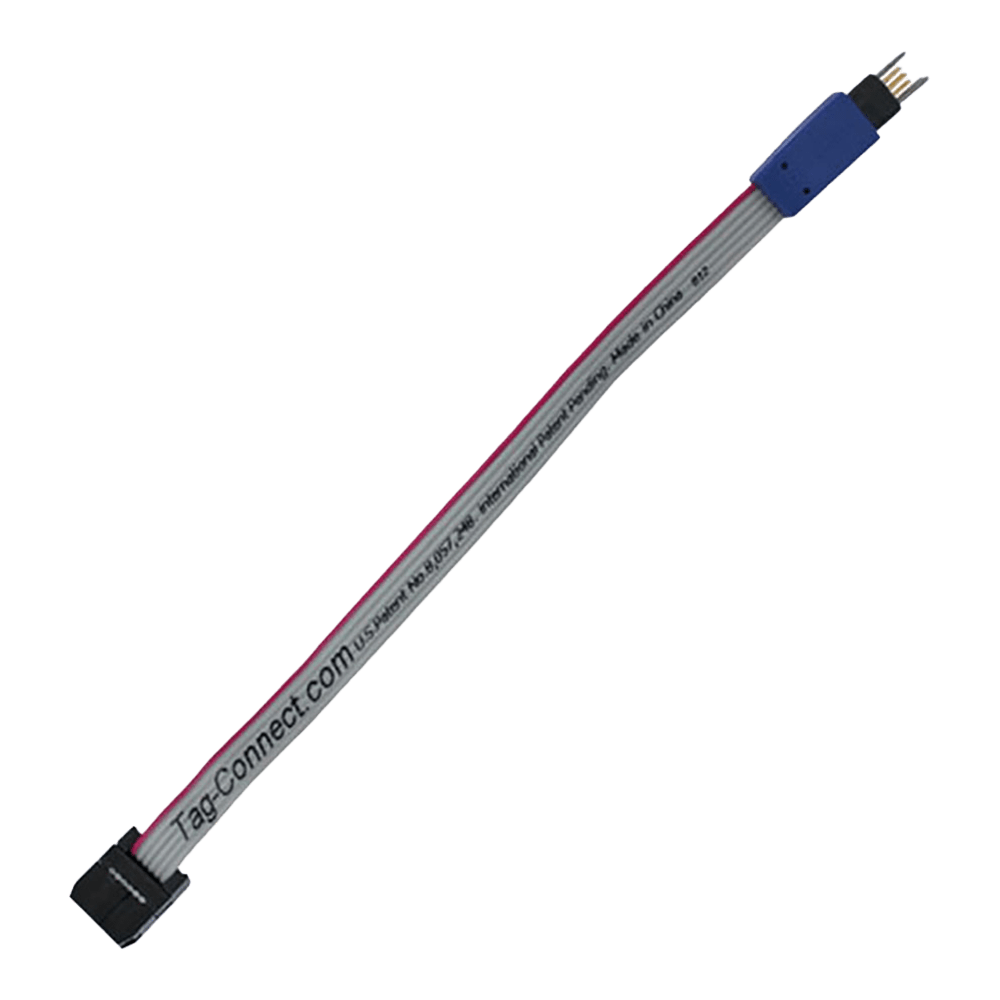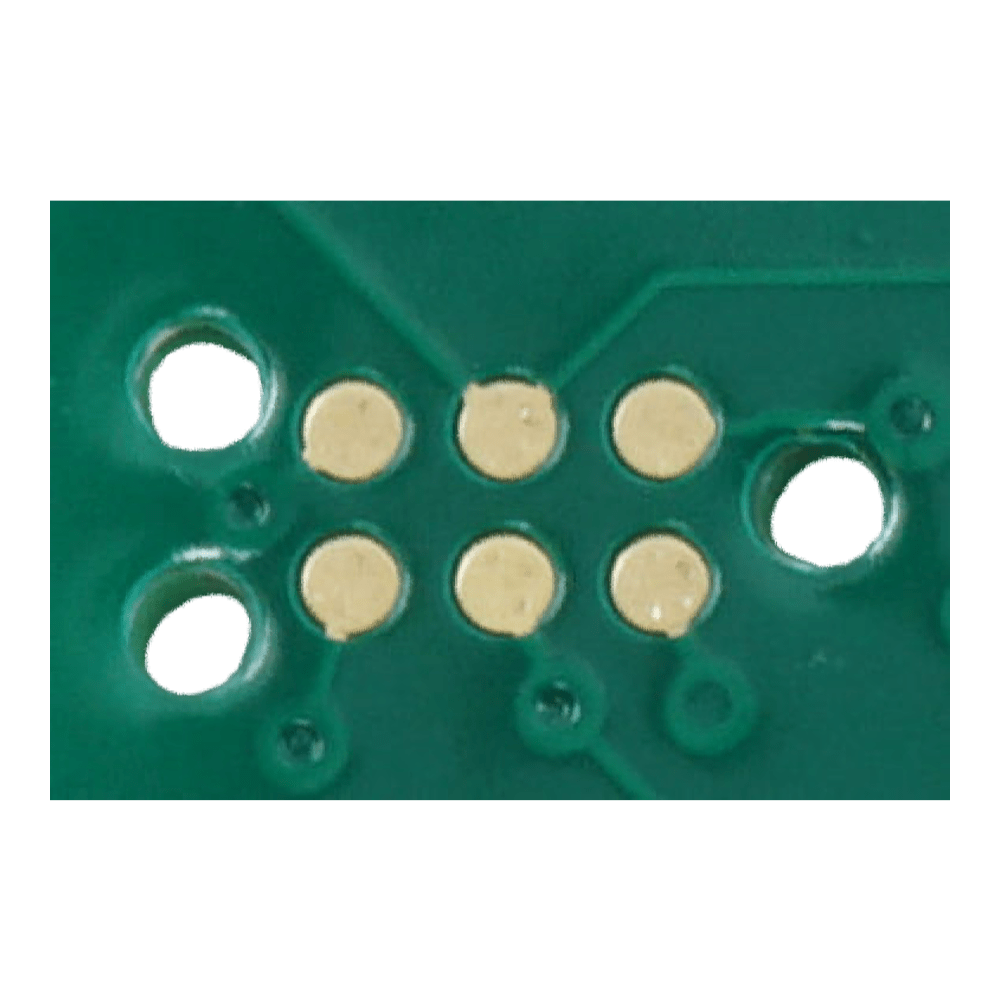



Key Features
Overview
The Tag-Connect TC2030-IDC-NL is a 6-pin Plug-of-Nails™ programming/debug cable that mates directly to a tiny TC2030 footprint on your PCB—no header required. Its 0.1″ IDC ribbon end connects to standard programmers, while spring-loaded pins contact the target pads via three alignment holes to ensure correct orientation. This “No-Legs” version is intended for quick, hand-held operations; for temporary hands-free retention during debugging, add the TC2030-CLIP.
The TC2030 family helps engineers cut PCB area and eliminate connector BOM and assembly time on every unit. If you need a self-retaining option for longer sessions, choose a legged 6-pin variant such as TC2030-PKT. For a longer non-legged lead, see TC2030-IDC-NL-10. If your toolchain uses Cortex SWD pinouts, consider the CTX family (e.g., TC2030-CTX-NL-STDC14) or pair this cable with the appropriate adapter such as ARM20-CTX to TC2030-IDC. For 10-pin targets, see TC2050-IDC-NL.
Engineers choose TC2030-IDC-NL to minimise board space, remove recurring connector costs, and speed production programming—while retaining compatibility with mainstream tools.
Why Engineers Choose The Tag-Connect TC2030-IDC-NL 6-Pin No-Legs IDC Programming Cable
Save PCB Area
Cut Recurring Costs
Faster Production
| General Information | |
|---|---|
Part Number (SKU) |
TC2030-IDC-NL
|
Manufacturer |
|
| Physical and Mechanical | |
Weight |
0.1 kg
|
| Other | |
Warranty |
|
HS Code Customs Tariff code
|
|
EAN |
5055383690916
|
The Tag-Connect TC2030-IDC-NL is the "No Legs" 6-pin Plug-of-Nails™ programming cable fitted with a 6-pin 0.1″ pitch ribbon connector.
With its tiny 0.02 sq inch footprint the TC2030 Tag-Connector has a footprint using about the same PCB space as an 0805 resistor.
The "No Legs" versions of our cables are designed to be held in place by hand for a fast programming operation or can be temporarily retained in place for debugging when used with our TC2030-CLIP boards.
See TC2030-IDC for the "Legged" version which has four additional feet which hold it securely in place on the PCB for debugging or programming use.
Popular applications include programming Atmel AVR, many Renesas MCU's (when used with our TC-Renesas E1 / E8a adapter) and Zilog. Also great for bringing our SPI / IIC / RS232 and test signal access.
Also available in 10″/254mm lengths (TC2030-IDC-NL-10). Contact us for 36″ length versions of these cables.
Frequently Asked Questions
Have a Question?
-
Does the IDC end require a special programmer?
No—the 0.1″ 6-pin IDC mates with common ribbon-style programmer headers/adapters.
-
Can I prototype without modifying my PCB?
Yes—many engineers use demo/footprint boards to trial the interface or practice placement.
-
Where can I get footprints and CAD for the TC2030 pattern?
Tag-Connect provides datasheets/footprints, and third-party libraries exist (SnapEDA/UltraLibrarian).
-
Is there a legged 6-pin alternative?
Yes—see TC2030-PKT for a self-retaining 6-pin legged cable.
-
What’s the difference between legged and no-legs versions?
Legged (“with legs”) self-secure to the board for extended debugging; no-legs are ideal for quick programming and smallest footprint.
-
How do I hold an -NL cable in place during longer sessions?
Use the TC2030-CLIP retainer which grips the alignment pins from the PCB’s back side for a secure temporary connection.
-
Can I use this cable for SWD debugging?
Yes—engineers commonly map SWD onto TC2030 footprints or choose CTX/adapter options for Cortex toolchains (e.g., ARM20-CTX to TC2030-IDC, or CTX cables).
-
How small is the TC2030 target footprint?
Approximately 0.02 sq in—about the size of an 0805 resistor area, freeing PCB space versus a 2×3 header.
-
What does the “-NL” suffix mean on TC2030-IDC-NL?
“-NL” denotes the “No-Legs” version—hand-held by default, or retained using the TC2030-CLIP for temporary hands-free use.




